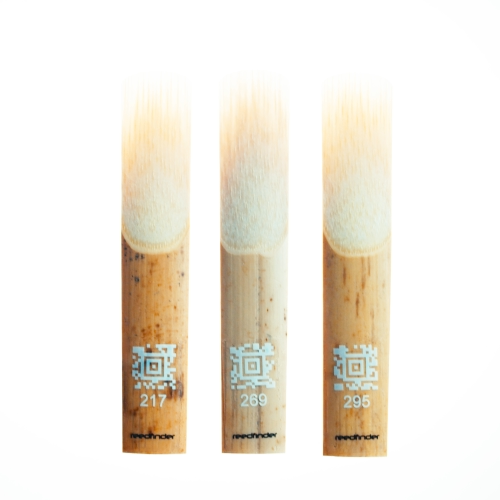Origin and Development of the Clarinet with German System
Learn about the origins and evolution of the German system clarinet, including the innovations of Iwan Müller and Carl Baermann.
Technical progress by Ivan Müller
In the beginning of 19th century, the development of the clarinet was characterized by slow technical progress. The breakthrough came with the construction of Ivan Müller (1786-1854), a German instrument maker and clarinet player who presented his innovations to the Paris Conservatory in 1812. These were:

- He modified the pads, which had previously been covered with felt, to allow for precise sealing by using leather pads.
- He made the shape of individual tone holes conical and added a metal ring.
- He adjusted the position and size of the tone holes according to acoustic principles, resulting in a previously unheard-of intonation accuracy.
- He replaced the previous six keys with thirteen keys, creating an instrument suitable for a fully chromatic play.
- He invented the ligature.
- Furthermore, Müller preferred that the reed touch the lower lip instead of the upper one, as it had been done before, resulting in much more precise tone production and a variety of tonal colors.
Although Müller's changes were initially rejected by the Paris Conservatory, Parisian instrument makers eventually adopted the innovations. Two years later, these instruments were already being used at the Conservatory. Müller's innovations quickly spread as the basis of the later clarinet with the German system.
How the development of saxophone influenced clarinet making?
Belgian instrument maker and musician Adolphe Sax (1814-1894) invented the saxophone around 1840, which was an important step for the further development of the clarinet. His student, Eugene Albert (1816-1890), transferred the ring mechanism he had invented to Müller's design. He added two rings to the lower joint of the instrument, and two years later, he added two more rings to the upper joint. The resulting instrument, with over 13 keys and 4 rings, spread under the name of Albert system, also called Simple System. The instrument already had significantly better sound and intonation. Its popularity continued until the mid-20th century. Many famous jazz clarinetists, such as Woody Allen, Raymond Burke, and George Lewis, used this type. Most of them did not switch to the Boehm clarinet, which had already become popular. Jazz clarinetist Edmond Hall expressed his opinion on the Albert system as follows:
"…The tone of an Albert is different for a band. Playin’ with a combination (a six piece dixieland band), I don’t think a Boehm clarinet fits as there. The tone is beautiful and rich and everything, but it hasn’t got the Albert big tone, especially when you get in the low register. You get a bigger tone out of the Albert than you do a Boehm.” ”…It’s agood [sic] instrument. I’ve used it ever since." #1
Carl Baermann
Munich clarinet virtuoso Carl Baermann (1810-1885) further developed the clarinet. The instrument he envisioned was much more complex than its German predecessors in technical terms. Baermann became familiar with the work of Boehm (see below), which also had a great impact on the instrument he developed. To implement his ideas, Baermann worked with Munich instrument makers, most notably Georg Ottensteiner (1815-1879). Their collaboration led to the Baermann system clarinet in 1860. The term "German clarinet" is also used after Baermann's innovations. Compared to the earlier Müller clarinet, it has the following changes:
- Baermann tried to avoid drilling unnecessary holes. Where necessary, he used various flap mechanisms to be able to produce a tone in different ways. (This practice has partly disappeared in later German clarinets.)
- He attached rings to both the upper and lower clarinet bodies. The fingering technique for the Baermann clarinet was largely the same as for instruments in the earlier German system (Müller, Albert).
Exceptions are the following changes:
- No f/c side key for the right hand.
- The lower fis/cis notes could be played with the long key for the right thumb.This allowed for playing trills and quick transitions between the notes e/h and fis/cis. He also added secondary keys for the little finger of the left hand. With these, the lower notes as/es and b/f could be played. #2
This partly relieved the little finger of the right hand, which thus had to use the roll between the keys less frequently. These innovations also opened up the possibility for a more virtuosic technical play. #3
Also associated with his name is the publication of the Baermann clarinet school (Vollständige Clarinett-Schule). This work, written between 1864 and 1875, contains the most versatile knowledge and instructions of that time for clarinetists. Since the material goes into detail and is of great use, it is still an important part of clarinet education today.
Further Development
Robert Stark (1847-1922) played a decisive role in the development of the German clarinet in the 19th century. He wanted to merge the advantages of the Boehm clarinet with the model previously built by Müller. #4
The Berlin instrument maker and musician Oskar Oehler (1858-1936) also rethought the structure of the German clarinet. He made numerous changes to the instrument's bore, mouthpiece construction, and mechanics. #5
The variant he created spread under the name Oehler system and is still used in German-speaking areas today.
[1] Capion Larsen: The Albert System. [Online] available at: http://capionlarsen.com/the-albertsystem/ (abgerufen am: 29.04.2019).
[2] I consider it more likely that the source mistakenly indicated the notes b/f, because according to the fingering chart in Baermann's published work "Vollständige Clarinett-Schule" the c/f key is located on the left side of the clarinet.
[3] Fox: Mühlfeld’s Clarinet. [Online] verfügbar auf: http://www.sfoxclarinets.com/basycl_art.htm (abgerufen am 01.05.2019).
[4] Brymer, Jack. Die Klarinette. Berlin, 1994, S. 67.
[5] Weller, Enrico. Oehler, Oskar, Geschichte. in: MGG Online. 2016. [Online] available at: https://www.mgg-online.com/article?id=mgg16712 (abgerufen am: 19.05.2019).
Do you like this article?
Thanks for your feedback

World’s #1
Reed Recommendation System
We believe every musician deserves a reed that matches their unique style and sound. Each reed is selected with cutting-edge AI and machine learning based on your playing feedback.
Should You Try the Benz-Tec Digital Reed Tester? I've tested it for you!
Check out the best clarinet jokes to brighten your day!
Struggling to hit the right notes? Your instrument might be the culprit! Learn how to fix intonation problems and stay in-tune.
Unleash the full potential of your clarinet with our exclusive care guide. Elevate your playing with tips that ensure your instrument remains in perfect condition.
Here are the top 7 picks of best applications to download for classical musicians. Tuners, Metronomes and more.
Buffet Crampon's latest innovation: the Prodige Pocket Clarinet. Is it really the best instrument for young clarinetists? Check out our review!
Discover the best clarinet mouthpieces! Check out our reviews and recommendations for Bb and Bass clarinet.
Learn the technique of circular breathing. Expert guide with step-by-step instructions and troubleshooting tips for continous breathing.
A groundbreaking innovation of Buffet Carmpon: Clarimate. This is our honest review about its innovative features and real-world performance. Is it for you?
Discover the role of clarinet ligatures in achieving optimal sound and control. Explore various ligature types, materials, and techniques to enhance your clarinet playing experience.

